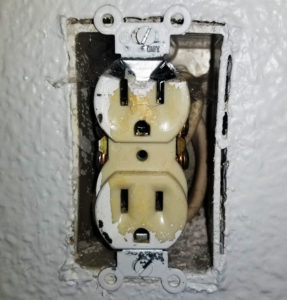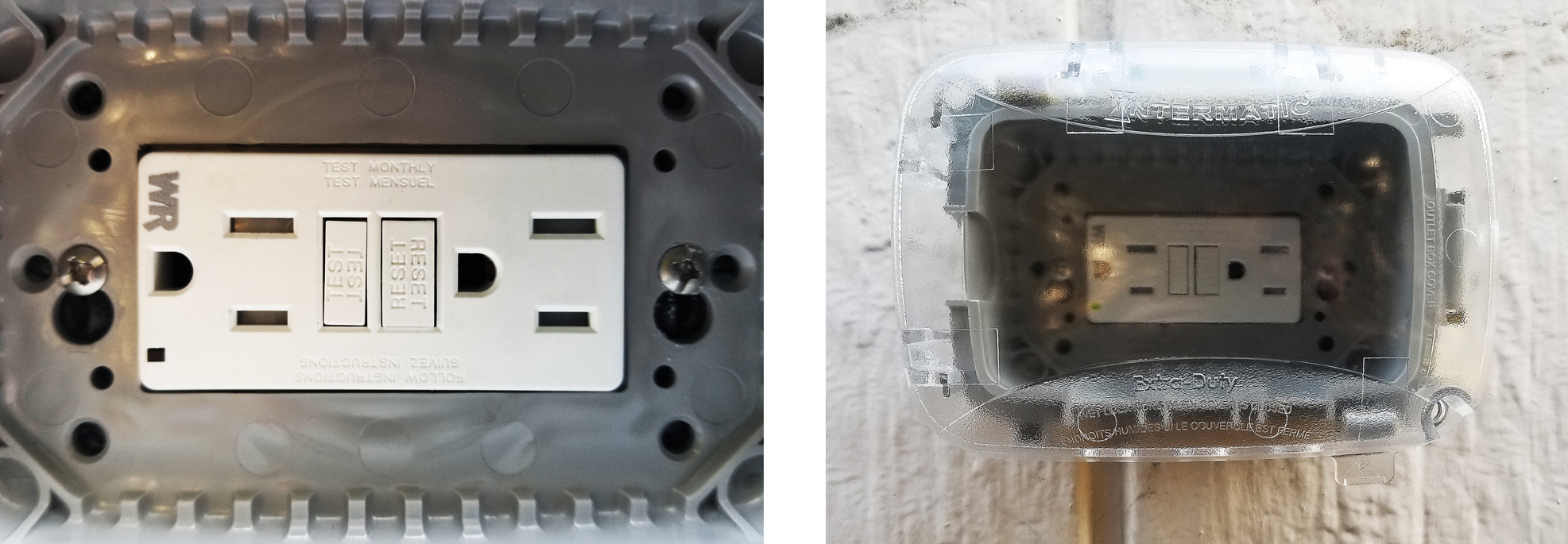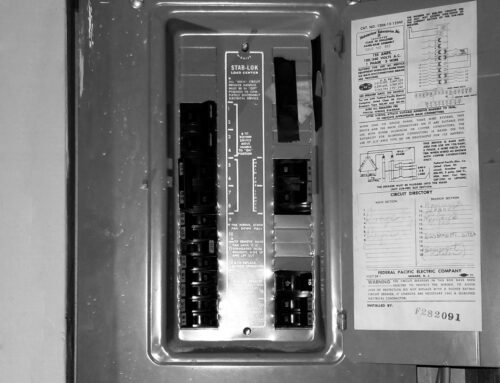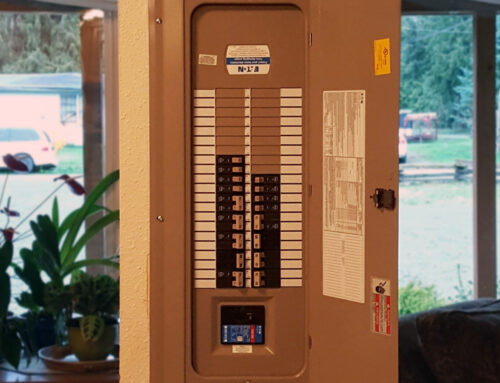Receptacles (electrical outlets) are a vital part of any home. They allow us to charge our phones, run our TVs and computers, and power any appliance that uses electricity. When they’re not working, it can bring our everyday lives to a screeching halt.
There can be a number of reasons a receptacle stops working. The problem could be as simple as a loose connection; the wires could also be damaged, which might require a brand new circuit. A device might still be working, but could have serious—and potentially dangerous—underlying issues.
Why should I worry about an outlet that doesn’t work?
If a receptacle isn’t working, replacing it may not fix the issue. From our experience, the problem is usually not the receptacle itself, but a loose connection elsewhere, as is a common occurrence with older outlets.
These loose connections can cause arcing to occur between conductors, which creates heat. Under the wrong circumstances, this heat will melt nearby material until it ignites flammable material, starting a dangerous fire.
You might notice some warning signs before a fire starts, such as:
- discoloration of the receptacle
- excessive heat around the receptacle
- a melted receptacle or plug
- parts of receptacle are broken
How do you go about replacing an electrical outlet?
We follow the most updated electrical codes, so we know what that you need Tamper Resistant Receptacles (TRRs) throughout your home. TRRs work just like regular receptacles, but they have built-in safety mechanisms to prevent small objects from being inserted into the receptacle. If we find an old 15A receptacle that needs replacing, we would install a TRR.
If we replace an outdoor receptacle, it needs to be Weather Resistant (WR) as well as tamper resistant. WR receptacles also require Extra Duty Weatherproof covers that allow a plug to be fully enclosed and protected from the weather.

Left: WR TR GFCI — Right: WR TR GFCI with Extra Duty cover
Ground Fault Circuit Interrupters (GFCIs) are a common type of receptacle in your home that provides protection against electrical shocks. Current code requires them on all kitchen, bathroom, garage, and outdoor receptacles, as well as any within 6’ of a sink.
GFCIs will have a TEST button and a RESET button in the center of the receptacle. Pressing the TEST button will trip or test the protection of the receptacle, and the RESET will restore the function to deliver power.
A GFCI receptacle should be functioning normally after pressing the RESET button; if not, then you know there’s a problem. The GFCI may also have LED indicator lights, and are on/off differently per manufacturer, so it is important to keep their manual to know for sure what the indicator lights mean.
Is the outlet the only problem with my electrical system?
Troubleshooting doesn’t usually end with just a single replaced receptacle. A circuit updated with new receptacles in your home will require an upgrade from a standard breaker to a breaker with Arc Fault Circuit Interrupter (AFCI) protection.
AFCI protection is now required, and is installed in many newer homes on most receptacles. This is typically done through an AFCI breaker in your electrical panel, as it protects the entire circuit starting from the panel. The purpose of AFCI protection to detect loose / arcing connections, and de-energize the circuit before it can start a fire.
Often when installing AFCI on older circuits, it will find issues with your current wiring that previous standard breakers do not. At this point, additional diagnosing will be done to make sure these issues are fixed to restore power and provide the most current protection available. We can usually also add GFCI protection where necessary, or even upgrade all the circuits with it to prevent an electrical shock.
After installing AFCI protection, power can be restored. The next step is to test and make sure the AFCI protection works. When the breaker is turned on, press the button on the breaker to test/trip the breaker. The breaker must then be switched completely off and then turned back on again.
If power works when it is restored, then you know no arcing or loose connections exist, and the AFCI protection is active. If power is not restored, another existing connection exists that has an arcing condition, and must be found in order to safely restore power.
Some problems found after installing AFCI protection include the following:
- Ground/neutral touching each other
- “Bootleg ground” where either the ground or neutral wire is intentionally connected to the other in order to fake an outlet tester
- Tear or puncture in a wire somewhere along the circuit
- Neutrals of two different circuits tied together
Typically neutrals from different circuits should not be tied together. When they are, and AFCI protection is there, they trip the breakers immediately. This is sometimes found in with older switches (especially 3-way switches) where one or multiple lights are controlled from more than one location.
If the wiring was done well in the first place, the task is as easy as finding the location and separating the neutral wires to their respective circuits.
Call a Licensed Electrician!
Receptacles aren’t made to last forever, and are often overlooked when people think about updating their electrical system. Even if you want to just replace a non-functioning receptacle, it’s important to have a licensed electrician come out to diagnose the issue first. Not only will they find the problem, but they have the experience to make proper, safe connections to the device.



